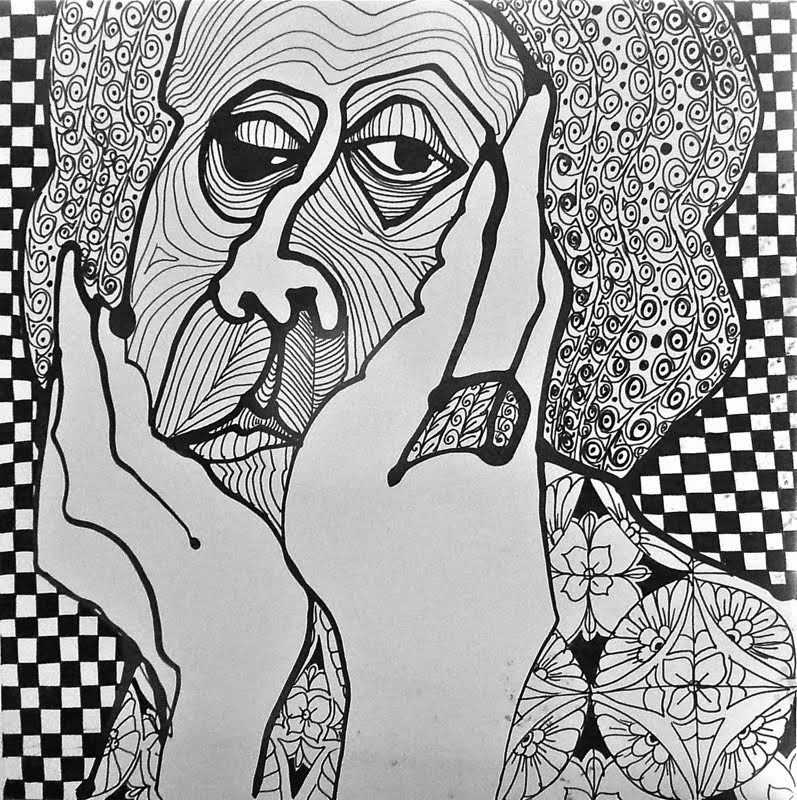What is a Zentangle?
Zentangle - A Zentangle is an abstract drawing
created by using repetitive patterns. It
is usually structured within a certain shape.
Drawing a Zentangle is entertaining, relaxing, and a great way to
express yourself creatively.
String - A string is
generally a random line drawn in pencil which creates an area within which you
draw your tangles.
Tangle - In its verb form “tangle” means
to draw a tangle. You tangle a tangle,
and in that process create Zentangle art. In its noun form this word is used as a
replacement for “pattern.”
Instructions:
- Find a portrait of the person you wish to Zentangle/draw.
- Complete your design matrix with patterns you could use for your Zentangle portrait that use the elements and principles of design.
- Brainstorm different shapes you could use as the outline or frame of your Zentangle portrait.
- When you have decided on a portrait, draw it out on your paper using pencil.
- Draw in some “strings” to fit your “tangles” into your portrait. These lines can be random, or they can help make your frame into a recognizable person, like the eyes, ears, mouth, and etc.
- Choose at least 5 patterns from your design matrix to use in your Zentangle. Be prepared to tell me how the patterns demonstrate at least one of the elements or principles of design.
- Fill in your Zentangle portrait with your tangles (patterns). Think about balance and unity when filling in your design. You should use at least 8 tangles in your completed image. At least 5 must come from your design matrix.
- When
your Zentangle portrait is complete, go over everything with black marker.
- Mat your finished image. Sign the bottom right hand corner.
- Complete the rubric and paperclip it to your finished work. Hand everything in.
Project Requirements:
- · Students will create a Zentangle portrait drawing using patterns created on their Elements and Principles design matrix.
- · Students will demonstrate their knowledge of the elements and principles through the creation of tangles or patterns.
- · Students will use at least eight different patterns in their drawing, and at least five must come from their design matrix.
.jpg)


























.JPG)














.jpg)



























